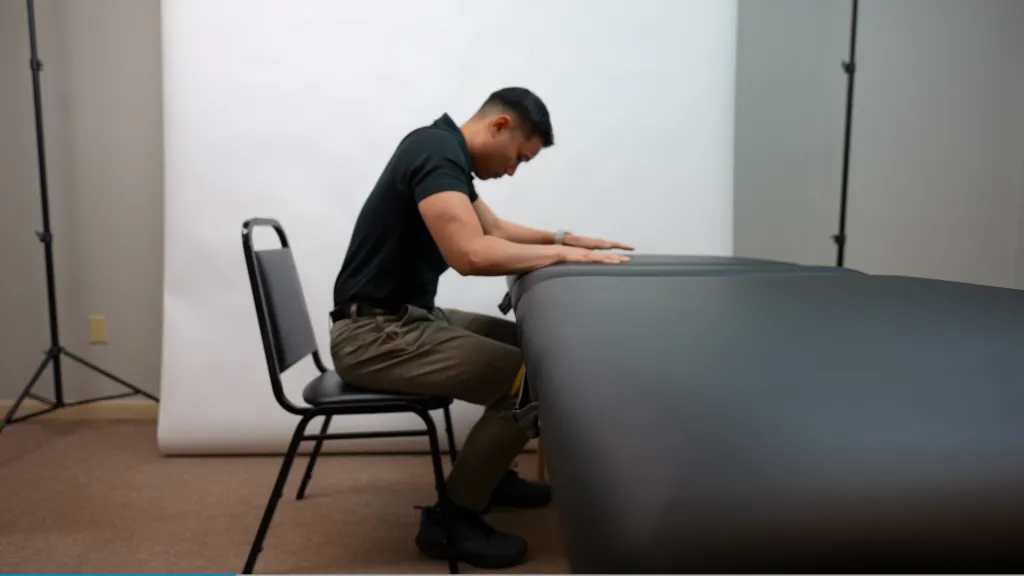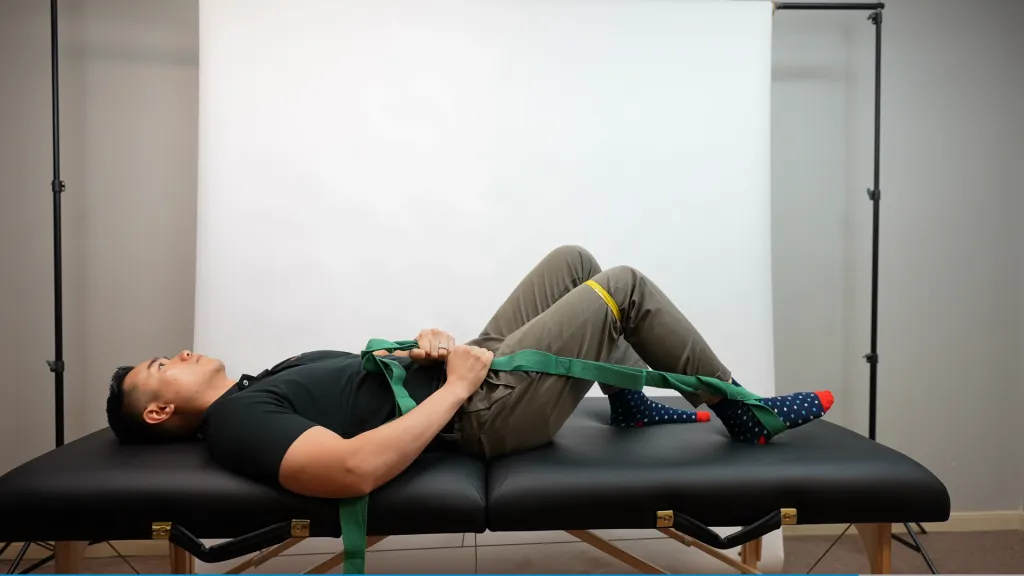How To Increase The Range Of Motion In Your Knee After TKR
This week we’re going to be talking about the three best knee flexion exercises to do after total knee replacement surgery. A flexion is when you bend a joint like the elbow or knee.
The reason you want to do flexion exercises so that you can stretch and heal the muscles around the new joint.
This also has the added benefit of keeping the knee flexible and in motion. This will prevent you from developing a knee flexion contracture, a knee that is unable to fully extend to 0°.
These exercises will help you increase mobility and decrease recovery time after your knee surgery. If you would prefer to watch a video with demonstrations of how to do the exercises properly you can watch it here:
Tuck Knee Hand Walk
The first knee flexion exercise is a tuck knee hand walk. All you need is a standard chair and a table in front of you.
Let’s say for our purposes my right leg has a new knee. You’re going to sit on the edge of the chair and slide the heel of the surgical knee as close to your butt as much as possible. Once you’re at a position where you feel tightness in front of your knee, place your hands on the table in front of you.
You’re going to walk your hand away from you as you lean forward. As you do this you’ll feel a bigger stretch in the surgery knee. You’ll only want to do this up until the point where it becomes unbearable. Make sure to listen to your body and don’t force any motions.

Perform this for four rounds of 15 seconds several times throughout the day.
Flat Back Heel Dig
The second knee flexion exercise is a flat back heel dig. For this exercise you’ll be on the bed with firm pillows under your calves and heels.
Another alternative is lying on a couch with legs elevated on the armrest starting off with a 90-90 degree position where it’s a straight line from your knees to your ankles and your knees to your hips. We’re going to be doing a technique called contract/relax. This is how it works.
When you dig the back of your heels into your pillow, you should feel the back of your thighs and hamstrings activate. When that happens, the front of your thigh or knee muscles have to relax. Hold this position for 10 seconds.
After 10 seconds slide your knees toward your chest until you feel tightness on top of the knees. Dig the heels down toward the pillows until you feel the back of your thighs and hamstrings and hold for 10 seconds. Try to slide that knee toward your chest a little more and repeat the process.

You’ll want to perform this for six rounds several times a day as tolerated.
Prone Knee Bend
The third knee flexion exercise that you can do at home is a prone knee bend. This is a move for those that can tolerate lying on their stomach without causing any other aches and pains in the body.
I’ll be using a yoga strap which I’ll link in the description below, but you can use a dog leash or a belt as well.
What you want to do is put the strap around the ankle of the surgical knee and pull the foot toward your butt. You want to be careful with not pulling too hard, as your brain might interpret this as a threatening motion and lock up the knee and muscles around it. Once you pull up to a position where you feel slightly uncomfortable. Hold for 10 seconds.

Once you’re done with that, try to pull the strap to get the knee to bend a little more. Once you hit your new uncomfortable knee range of motion, hold that for another 10 seconds. Keep performing this for six rounds of 10 seconds as much as you can tolerate throughout the course of a day.
Passive Heel Slide
The fourth knee flexion exercise that you can do in the house is a heel slide. This is a great move for those of you who can’t tolerate lying on your stomach because of back issues.
Just like the last exercise, I’m going to use a yoga strap but you can use a dog leash or a belt.
You want to loop the strap around the ankle of the surgical knee. What you’re going to do is pull the ankle towards the butt until you get to an uncomfortable position. At this point, hold the strap tight for 10 seconds and then try to pull the heel closer to your butt.

Repeat this for six rounds of 10 seconds as much as you can tolerate throughout the course of a day.
Get The Recovery Team You Deserve
We just went through the best knee flexion exercises after total knee replacement surgery.
The most important thing to keep in mind is to do these consistently and as often as you can tolerate. This will keep the knee from getting too swollen or stiff and prevent a knee flexion contracture from limiting you down the road.
Please click the button below to talk to one of our knee replacement specialists to get answers to all of your questions and concerns.

